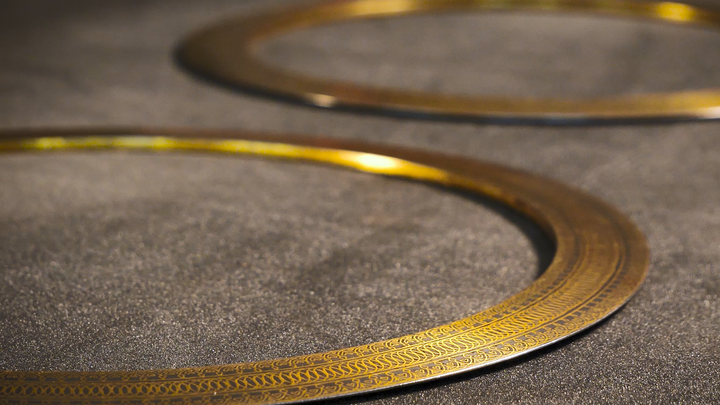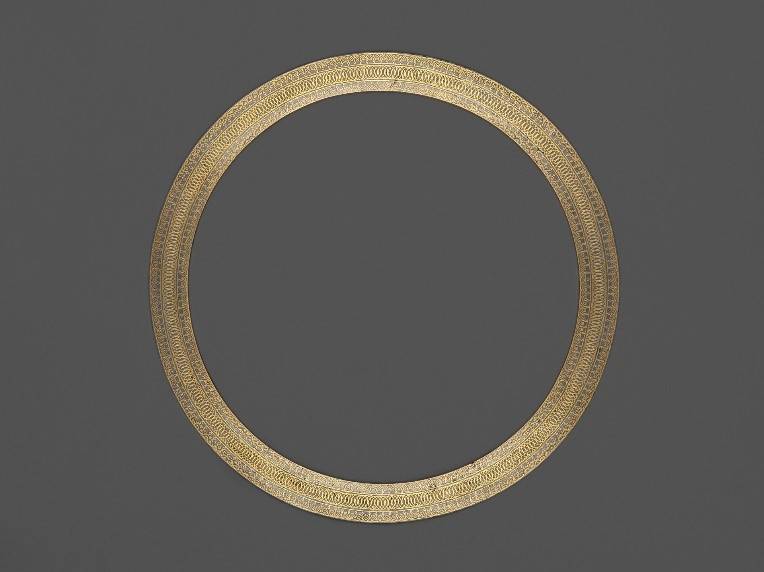Location: Punjab, 19th century
Materials: Steel and gold
Measurements: Diameter 21.6 cm
Inv No: OA1591
The origins of the war quoit (chakkar, chakra or chakram) date back to ancient India, being a favoured weapon of Lord Vishnu and yielded by his avatar, Krishna, in the major Hindu epic, the Māhābharata. Their continued use is recorded by two 16th-century paintings in the Victoria and Albert Museum, which show a group of Hindu holy men in battle, yielding these circular throwing blades (IS.2:61-1896 and IS.2:62-1896). War quoits later became a favoured weapon of Sikh warriors, particularly the Akali. Literally meaning ‘Immortal’, the Akali are a religious warrior group which emerged to protect the Sikh community.

The disc’s outer edges are razor sharp, whereas its inner ring is blunt. This enabled Sikh warriors to spin the weapon on their index finger, gaining momentum, before hurling it at their opponents with maximum speed. Accounts reported a flight range of 30 to 50 yards, which resulted in deep gashes and severed limbs. The weapon could also be thrown underhand or used in hand-to-hand combat.
18th-century quoits are usually of plain steel, whereas this 19th-century example is beautifully embellished with gold decoration in a vegetal twisted-ribbon motif. This shift is indicative of the period of stability and wealth associated with Ranjit Singh’s reign. The design on the reverse of the quoit features a band of circular rings, reminiscent of the shape of the weapon itself.
Gold-decorated quoit
Location: Punjab
Date: 19th century
Materials: Steel and gold
Measurements: Diameter 21.6 cm
Inv No: OA1603
The present example contains similar vegetal motifs as OA1591, however it forms a pair with another quoit in the Wallace Collection, which has identical front and back patterns (OA1557).
Quoits could be worn at a warrior's waist or around their necks, and they were often stacked on the conical turban of an Akali. Known as dastar bunga, these turban fortresses were adorned with quoits and fitted with single- and double-edged daggers, which were useful in hand-to-hand combat.
In 1872, Sir Richard Wallace (1818-1890) purchased war quoits from the London dealer Messrs Durlacher. As there are a total of five quoits in the Wallace Collection, it is not possible to know exactly which are those referenced in the purchase ledgers.




